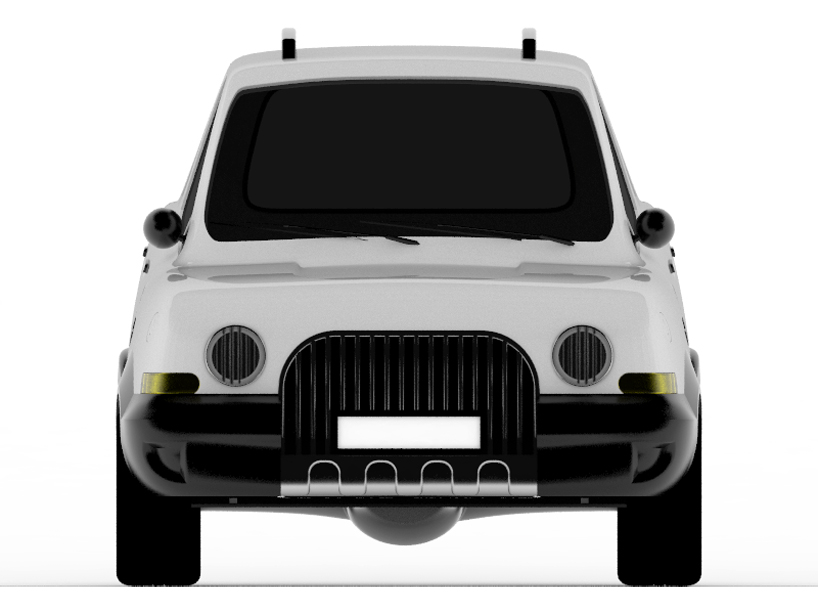
Renault 4 Redesign by Vladimir Lonzaric by vladimir lonzaric from croatia
designer's own words:
Description of a proposition - redesigning the legendary R4
I gave the proposition the working title "R4 x 4". I'm well acquainted with this popular car I've driven it for many years (the enhanced GTL version) so I believe that it can be very modern in a revamped version.
It's an idea which was very original at the time of its inception. It's a car for craftsmen, farmers, the young, families, women etc. Its soft suspension and raised chassis, especially in the back, enabled it to travel even the more difficult terrains and in that sense it was ahead of its time. The fifth door in combination with a folding rear seat enable easy loading and unloading of a spacious trunk and thus need to be kept almost entirely in their original form.
I propose that these features be improved by raising the front and that protective additions be mounted on the undercarriage like in today's SUVs. There also needs to be a model with a four-wheel drive and enhanced construction. I suggest an increase in the vehicle and wheel width which would produce added stability in curves with regard to the height of the vehicle which could be regulated with two suspension types - one for off-road and one for road use. Along with that, additional room would be gained for enhancing the chassis' construction in the lateral parts with air bags and thicker protective layers of the chassis on the inside of the vehicle. Shock absorbers need to be installed in the undercarriage and the vehicle needs to be equipped with safety electronics systems such as radar which detects stationary vehicles and overtaking cars situated in a dead angle. Parking sensors need to be installed. Varying versions from elementary, minimalist to sports and luxury ones need to be designed.
I propose an increase in the surface and the angle of the front windscreen to gain greater visibility on the road. All glass surfaces are somewhat bigger in comparison to the present R4 models. The safety aspect is reflected in the increased surface of the head lights and tail lights which would be done in Xenon and LED technologies. Front and rear shock-absorbing bumpers would be integrated into the chassis and made from softer polyurethane commonly used in the vehicles' interior.
For the interior I suggest a somewhat sporty retro style with a speedometer, tachometer and a fuel gauge in the shape of a letter C which can double as a shelf for storing small items: newspapers, umbrella, candy, CDs etc. In front of the passenger seat there would be a bigger drawer, this time in the shape of the letter O. By increasing the width of the vehicle we would gain the space for the central console between the driver and passenger's seats which would contain the navigation screen, radio, AC and ventilation buttons, depending on the version.
The console continues between the seats where there's an arm rest which can contain an isolated compartment that can double as a refrigerator.
CIRCULAR ECONOMY
We're witnessing the grave problem of environmental pollution by the use of fossil fuel in the production of vehicle parts and as motor fuel.
As early as 1941, Henry Ford designed a chassis made of biodegradable plastic derived from cannabis (industrial hemp) resin.
Today this material is used only in the production of certain parts in high-quality cars. Such chassis is 1/3 lighter than the usual one, 10 times harder than steel and most importantly, doesn't oxidise.
At the same time it functions as a heat insulator.
In the age of developed genetic engineering it shouldn't be difficult to grow the recognisable cannabis plant without the hallucinogenic properties exclusively for industrial use. Ship ropes made from that plant were 10 times tougher than the ones used today.
Canvas for the vehicle seats could also be made from hemp. This remarkable plant, illegal today (except for medical purposes), can be grown on arid soil, even on the edge of deserts which would mean salvation for numerous communities in the underdeveloped parts of the world and the reduction in population migration.
On the surface of 60 x 60 metres we can get 6800 litres of bio diesel from the seeds of industrial hemp.
If for average 20.000 kilometres a year we need 2.000 litres of fuel we have 4.800 litres left for heating living spaces. If we install electric motors on each wheel (as in current hybrids) and use brake energy for their recharging, we will additionally reduce fuel consumption. Of course, there are other trees rich in resin such as conifers.
Potential version of the chassis: resins pressed with cellulose under high pressures with the addition of fibres and natural rubber for elasticity. This type of chassis would be fire-proofed by lining its exterior with a layer of pressed recycled glass.
Front view
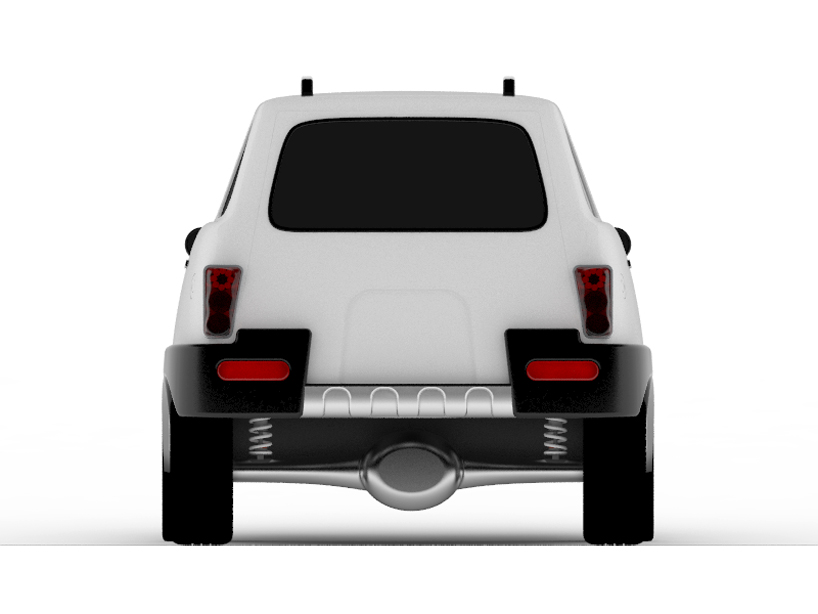 Rear view
Rear view
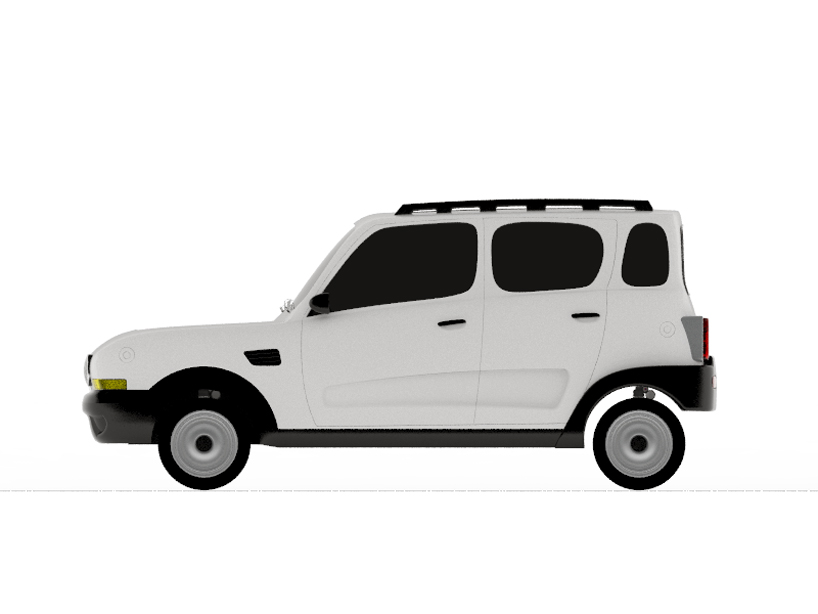 Side view
Side view
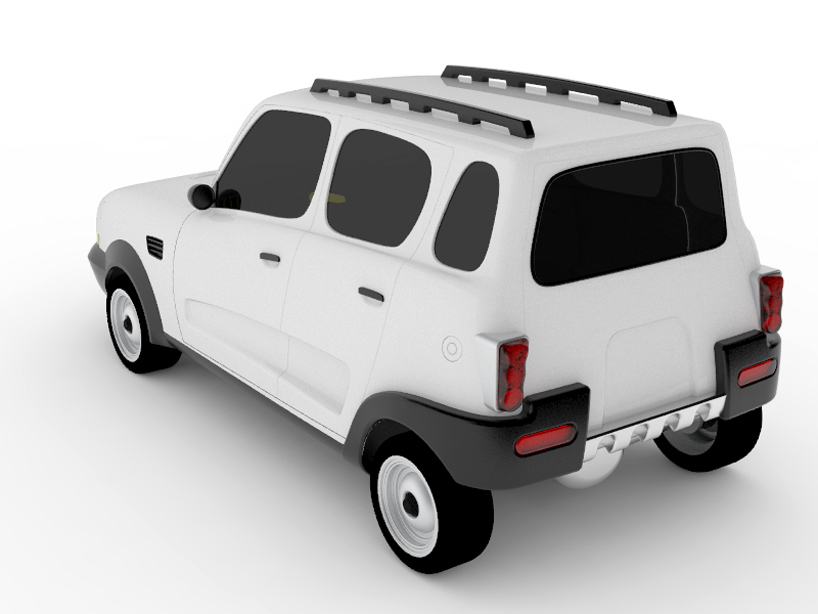 Perspective view
Perspective view
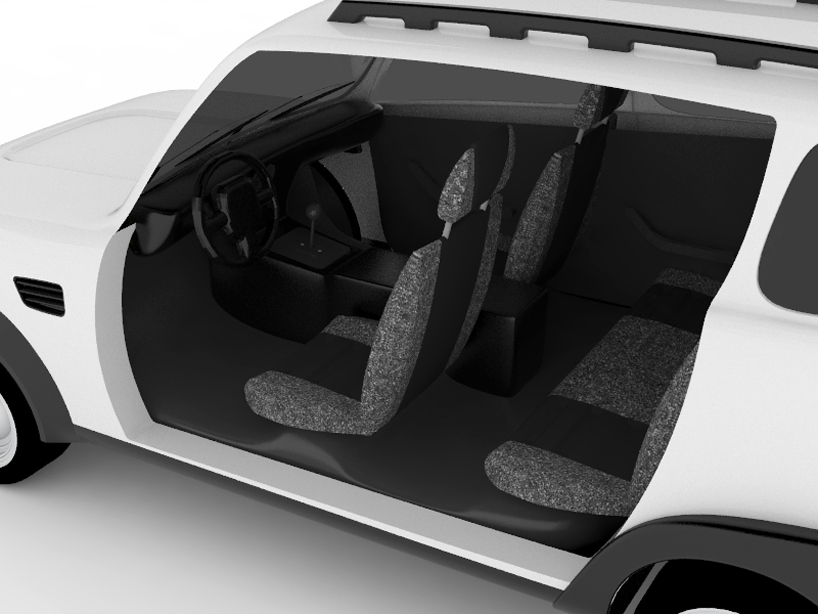 Interior view
Interior view
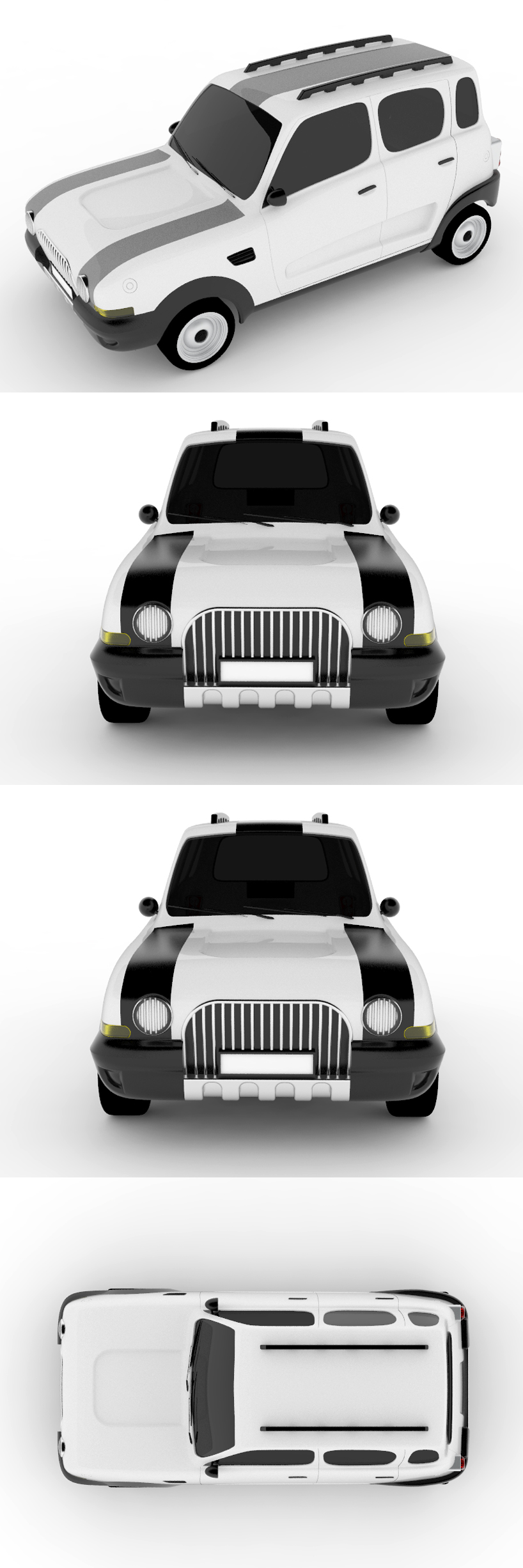 Collage of the sport version
Collage of the sport version